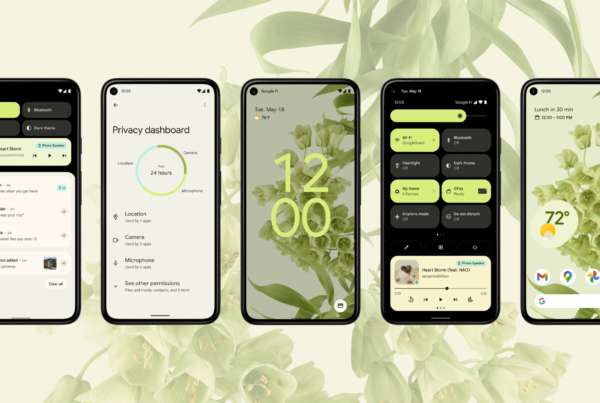There are approximately 3,280,085,452 internet users in the world.
If we need advice or guidance about a service or product, we usually turn to the internet. It’s a quick, efficient and less time consuming process instead of asking a friend or colleague who may not necessarily know the correct answer. The days of the Yellow Pages have ended, instead we have a more effective solution to our problems and that is Google Search Engine, right at our finger tips. It is important that your business has an up-to-date, functional website that targets the correct market. Having a good website will produce a great impression to potential clients, if you are not online, then potential clients do not know of your existence.
Where to start:
Domain Name to remember
The domain name is the URL for your business website, for example www.reactivegraphics.co.uk.Try to make it a memorable one. It is your brand representative after all. It should be short, clear and persuasive… even better try to include acronyms if possible, that way your target market will always have you in mind. Try to stop your target market from even using Google Search, if they already know your domain name and service they are unlikely to search other competitors. Once you have chosen the correct domain name, it is time to think about the “Top Level Domain” (TLD) this is the suffix at the end of your domain name; for example “.com” or “.co.uk” or “.net”. We have all the options, but which one would suit your business best?
Wait…before we start, what does “Co” stand for?
It is an acronym for Company or Commercial Content, it is an country-code domain extension.
Here are some guidelines to each Top Level Domains:
We highly recommend that you secure both “.co.uk” and “.com“- a few years ago this was not possible, however now you are able to secure them both. This ultimately gives your brand a more dominant role within Google Search Engine, you are fighting against one less competitor.
.com- Is the most widely used extension, which stands for “commercial”- The majority of businesses prefer this suffix, because they feel that they have a dominant online presence. If you want to target an international audience “.com” would be your best option, this would also be the best option for businesses which sell goods and services as .com targets the World Wide Web Internationally.
.co.uk- Is mainly used for those businesses who just want to target the UK, it stands for “Commercial UK Company”. We recommend choosing .co.uk when your business is small, and your idea of a website would be for clients or potential clients in the UK to learn more about your business.
.net- defines “network” most commonly used by internet service providers, if your business is involved within the programming of the internet then .net suits your target market. For those products, services and small businesses .net would not be an option to consider.
.info- If your business is known as a search engine, which provides information or known as a resource website then .info would definitely fit your website URL..
The Importance of Planning
Many people nowadays think that they have the skills and knowledge to set up a business website, which quite frankly they probably can do up to a point. Modern software enables consumers to become producers, then it almost seems a cost-effective solution. Meanwhile, lets at least start with an effective plan… Setting up a website, is the online version of setting up a business. It still needs research, marketing and visual ideas as it would need setting up a department store. Go right back to your business plan, this would be a great way to start when designing the ideal website for your business. You must not stumble into something blind, when launching a new project we always think about the key elements to attract the right target market, research competitors, research new technological advancements that may bring new elements to your business. Do not struggle in silence, visit Reactive… let us put our creative minds to work. www.reactivegraphics.co.uk.
Layouts, Design, Colour Schemes
Take a look at some of our previous clients layouts and colour schemes:
In order to appeal to your target market you have to decide on the right colour scheme. Colour scheme is what keeps your viewers engaged, after all we do not want them going anywhere else. The importance of colour scheme stems from the significance of colour to the human mind. The use of colour will determine how your viewer engages and interacts online, it can spark interest, generate certain emotions and create ideas. If we use colour effectively, the outcome is likely to be a bigger result. What mood do you want to create on your website? Within the psychology of colours, warm colours show excitement, optimism, and creativity; cool colours symbolizes peace, calmness, and harmony. Bright colours tend to set a positive and happy mood, whereas dark colours tend to portray the opposite. Colour is used to get your business noticed. Going back to the domain name, it is about creating something that is memorable, therefore same goes with colours, let your audience remember the colour scheme and design, which will ultimately lure them back to your website. The best way to start is to pick two or three colours that compliment each other and work well together on a webpage. The importance of colour match means that your audience feels more relaxed when viewing your website, if there is bad colour combination it can become quite a busy and irritating experience.
Know your colours…

Here are a few examples of colours and their Psychological Properties which may help you determine the right colours for your website:
Blue: communication, intelligence, logic, reflection, lack of unfriendliness, coldness. Strong blues calms the mind, reflects clear thought and aids concentration. It is known as the colour of clear communication.
Red: strength, courage, energy, warmth, excitement, aggression, visual impact. Red is known as a powerful colour, grabs first attention and is a lively colour. Meanwhile, it can also be perceived as demanding and aggressive.
Green: refreshment, balance, harmony, reassurance, environmental awareness, peace. It is known as the colour of balance, we are also reassured by green as it provides us with water.
Do take the time to research your colours wisely, because this can also help with your business aims and objectives and help target your market in a physiological way without them realising. We are here to help you with all the colours schemes and layouts, please feel free to ask our creative team at Reactive: https://www.web-designlondon.co.uk/contact/
At Reactive Graphics we aim to provide all our clients with the best expert advice
In terms of planning, designing and implementing a website that mirrors brand values, aims and objectives and gives your target market the best experience online. We hope that all the information we have provided you with, gives you more of a clear idea of what is involved in the pre-production of web design and development.





